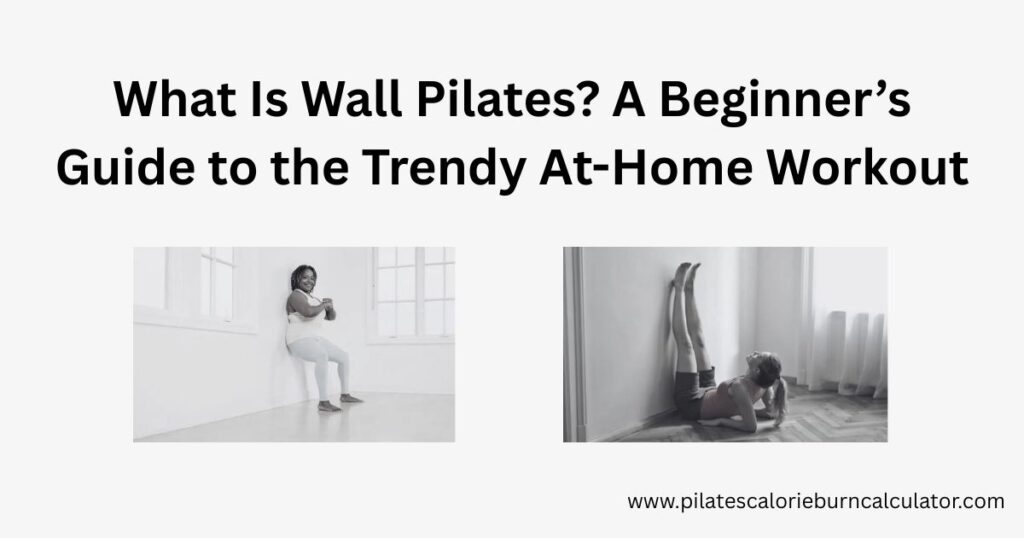
If you’ve been scrolling through fitness TikTok or Instagram lately, you’ve probably seen #WallPilates popping up everywhere. This innovative twist on traditional Pilates is gaining popularity for its accessibility and effectiveness—especially for home workouts.
But what exactly is Wall Pilates, and is it right for you? In this guide, we’ll break down:
✓ What Wall Pilates is (and how it works)
✓ How it’s different from traditional Pilates
✓ Who should try it (and who might want to skip it)
✓ A simple beginner routine to try at home
What Is Wall Pilates?
Wall Pilates is a mat-based Pilates variation that uses a wall for support, resistance, and alignment. Unlike traditional Pilates, which relies on floor exercises or equipment like the Reformer, Wall Pilates incorporates the wall to:
Improve posture (by encouraging spinal alignment)
Increase stability (helpful for beginners or those with balance issues)
Deepen stretches (using gravity and leverage)
Modify difficulty (easier or harder depending on positioning)
It’s a low-impact, full-body workout that focuses on core strength, flexibility, and muscle toning—just like classic Pilates, but with an added element of support.
Wall Pilates vs. Traditional Pilates: Key Differences
| Feature | Wall Pilates | Traditional Pilates |
|---|---|---|
| Equipment Needed | Just a mat + wall | Mat, Reformer, or props |
| Support Level | High (wall assists balance) | Minimal (more core engagement) |
| Beginner-Friendly? | Yes (great for modifications) | Can be challenging for newbies |
| Focus | Alignment + stability | Core strength + precision |
| Best For | Rehab, posture correction, home workouts | Strength building, advanced control |
Why choose Wall Pilates?
You’re new to Pilates and want extra stability.
You’re recovering from an injury (the wall reduces strain).
You want to improve posture (great for desk workers!).
Stick to traditional Pilates if:
You love equipment-based workouts (Reformer, Cadillac).
You want a more intense core challenge.
Who Should Try Wall Pilates?
Great For:
Beginners (easier to learn form with wall support)
People with back/joint issues (reduces pressure on the spine)
Seniors or those with balance concerns (wall = safety net)
Postpartum women (gentle on core and pelvic floor)
Office workers (counters slouching and tight hips)
Maybe Not For:
Advanced Pilates lovers craving heavy resistance
Those who prefer fast-paced, cardio-focused workouts
4 Key Benefits of Wall Pilates
Better Posture
The wall helps align your spine naturally, combating “tech neck” and slouching.
Easier Modifications
Can’t do a full roll-up? The wall assists! Struggling with balance? The wall stabilizes you.
Deep Stretching
Poses like Wall Angels and Legs-Up-the-Wall improve flexibility passively.
No Equipment Needed
All you need is a mat (or carpet) and a blank wall—no fancy machines.
Beginner Wall Pilates Routine (10 Minutes)
1. Wall Roll-Down (Spinal Mobility)
Stand back against the wall, feet hip-width apart.
Slowly roll down vertebra by vertebra, arms sliding down the wall.
Roll back up. Repeat 5x.
2. Wall Squats (Glutes & Thighs)
Lean back against the wall, lower into a squat (knees at 90°).
Hold for 15 seconds. Repeat 3x.
3. Wall Angels (Shoulder & Posture)
Press your back/arms against the wall.
Slide arms up and down in a “snow angel” motion. 10 reps.
4. Legs-Up-the-Wall (Relaxation + Hamstrings)
Lie on your back, legs extended up the wall.
Breathe deeply for 1-2 minutes.
So, is Wall Pilates Worth Trying?
Yes! It’s a low-risk, high-reward workout perfect for:
Pilates newbies
Anyone with tight muscles or poor posture
People who want a gentle but effective routine
While it’s not as intense as Reformer Pilates, it’s an excellent gateway into the practice—and a great way to stay active without equipment.
Ready to try? Push your couch aside and use that empty wall!